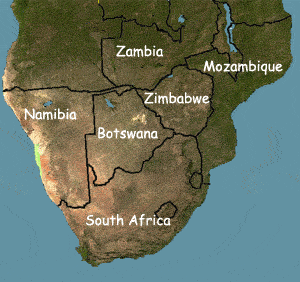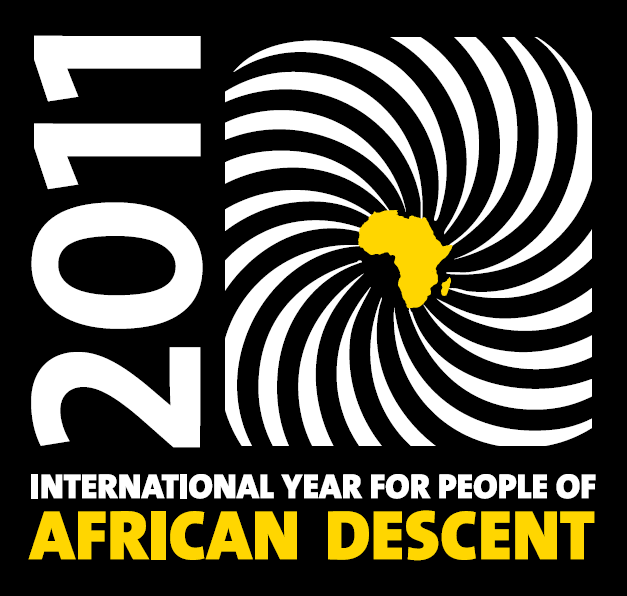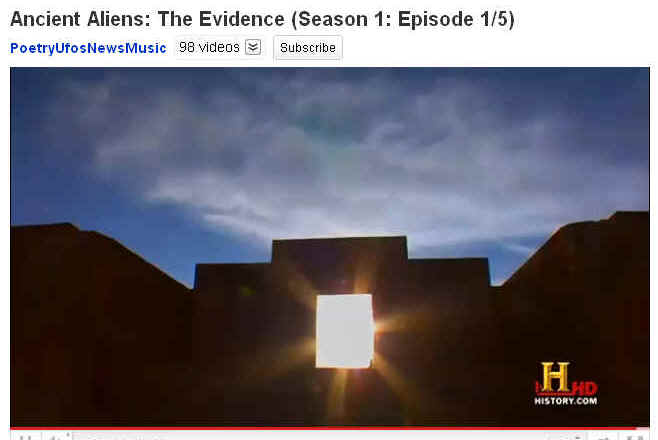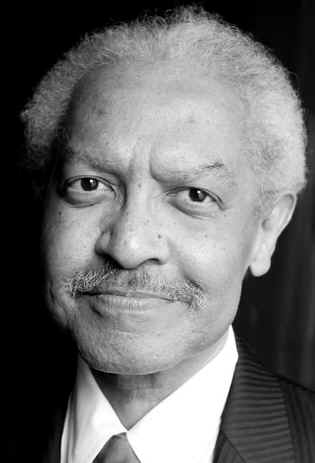International Year for People of African Descent
2011 declared by the UN General Assembly as the International Year for people of African Descent.
The long-awaited Official Logo is now available (attached as a pdf file, and with the document specifying use guidelines; we have Mrs. Emily Gunter, who is bringing a major traveling exhibition to Miami in November, of paintings by Kadir Nelson, author and illustrator of "We Are the Ship: The Story of Negro League Baseball," to thank for researching and finding this Logo).
The International Year is a global observance and a call to all of humanity to recognize and redress past and present injustices that have been visited upon people of African Descent, but also a call to People of African Descent to showcase our best and brightest contributions to the rest of humanity.
We are well served to make maximum use of the IYPAD logo in appropriate promotional materials, publications, etc.
The attached information, as mentioned, specifies the proper use of this official
logo. Some of these regulations and restrictions may be too narrow for
many of our purposes; in those cases, use of an unofficial symbol, or
simply the wording can be added to promotions to tie them into this year of
observance. The official logo also serves as a recognizable symbol for all
official or UN-sanctioned happenings.
![]()
April 14, 2011
Languages Grew From a Seed in Africa
A researcher analyzing the sounds in languages spoken around the world has detected an ancient signal that points to southern Africa as the place where modern human language originated.
The finding fits well with the evidence from fossil skulls and DNA that modern humans originated in Africa. It also implies, though does not prove, that modern language originated only once, an issue of considerable controversy among linguists.
The detection of such an ancient signal in language is surprising. Because words change so rapidly, many linguists think that languages cannot be traced very far back in time. The oldest language tree so far reconstructed, that of the Indo-European family, which includes English, goes back 9,000 years at most.
Quentin D. Atkinson, a biologist at the University of Auckland in New Zealand, has shattered this time barrier, if his claim is correct, by looking not at words but at phonemes — the consonants, vowels and tones that are the simplest elements of language. He has found a simple but striking pattern in some 500 languages spoken throughout the world: a language area uses fewer phonemes the farther that early humans had to travel from Africa to reach it.
Some of the click-using languages of Africa have more than 100 phonemes, whereas Hawaiian, toward the far end of the human migration route out of Africa, has only 13. English has 45 phonemes.
This pattern of decreasing diversity with distance, similar to the well-established decrease in genetic diversity with distance from Africa, implies that the origin of modern human language is in the region of southwestern Africa, Dr. Atkinson says in an article published on Thursday in the journal Science.
Language is at least 50,000 years old, the date that modern humans dispersed from Africa, and some experts say it is at least 100,000 years old. Dr. Atkinson, if his work is correct, is picking up a distant echo from this far back in time.
Linguists tend to dismiss any claims to have found traces of language older than 10,000 years, “but this paper comes closest to convincing me that this type of research is possible,” said Martin Haspelmath, a linguist at the Max Planck Institute for Evolutionary Anthropology in Leipzig, Germany.
Dr. Atkinson is one of several biologists who have started applying to historical linguistics the sophisticated statistical methods developed for constructing genetic trees based on DNA sequences. These efforts have been regarded with suspicion by some linguists. In 2003 Dr. Atkinson and Russell Gray, another biologist at the University of Auckland, reconstructed the tree of Indo-European languages with a DNA tree-drawing method called Bayesian phylogeny. The tree indicated that Indo-European was much older than historical linguists had estimated and hence favored the theory that the language family had diversified with the spread of agriculture some 10,000 years ago, not with a military invasion by steppe people some 6,000 years ago, the idea favored by most historical linguists.
“We’re uneasy about mathematical modeling that we don’t understand juxtaposed to philological modeling that we do understand,” Brian D. Joseph, a linguist at Ohio State University, said about the Indo-European tree. But he thinks that linguists may be more willing to accept Dr. Atkinson’s new article because it does not conflict with any established area of linguistic scholarship. “I think we ought to take this seriously, although there are some who will dismiss it out of hand,” Dr. Joseph said.
Another linguist, Donald Ringe of the University of Pennsylvania, said, “It’s too early to tell if Atkinson’s idea is correct, but if so it’s one of the most interesting articles in historical linguistics that I’ve seen in a decade.”
Dr. Atkinson’s finding fits with other evidence about the origins of language. The bushmen of the Kalahari desert belong to one of the earliest branches of the genetic tree based on human mitochondrial DNA. Their languages belong to a family known as Khoisan and contain many click sounds, which seem to be a very ancient feature of language. And they live in southern Africa, which Dr. Atkinson’s calculations point to as the origin of language. But whether Khoisan is closest to some ancestral form of language “is not something my method can speak to,” Dr. Atkinson said.
His study was prompted by a recent finding that the number of phonemes in a language is related to the number of people who speak it. This gave him the idea that phoneme diversity would increase as a population grew but fall again when a small group split off and migrated away from the parent group.
Such a continual budding process, which is how the first modern humans expanded round the world, is known to produce what biologists call a serial founder effect. Each time a smaller group moves away, there is a dilution in its genetic diversity. The reduction in phonemic diversity over increasing distances from Africa, as seen by Dr. Atkinson, parallels the reduction in genetic diversity already recorded by biologists.
For either kind of diversity dilution to occur, the population budding process must be rapid, or diversity will build up again. This implies the human expansion out of Africa was very rapid at each stage. The acquisition of modern language, or the technology it made possible, may have triggered the expansion, Dr. Atkinson said.
“What’s so remarkable about this work is that it shows language doesn’t change all that fast — it retains a signal of its ancestry over tens of thousands of years,” said Mark Pagel, a biologist at the University of Reading in England who advised Dr. Atkinson.
Dr. Pagel sees language as central to human expansion across the globe.
“Language was our secret weapon, and as soon we got language, we became a really dangerous species,” he said.
In the wake of modern human expansion, archaic human species like the Neanderthals were wiped out and large species of game, fossil evidence shows, fell into extinction on every continent shortly after the arrival of modern humans.
April 1, 2011
Manning Marable Dies on eve of redefining Malcolm X
For
two decades, the Columbia University professor Manning Marable focused on the
task he considered his life’s work: redefining the legacy of Malcolm X. Last
fall he completed
Malcolm
X:
A Life of Reinvention, a 594-page biography described by the few
scholars who have seen it as full of new and startling information and
insights.
The
book is scheduled to be published on Monday, and Mr. Marable had been looking
forward to leading a vigorous public discussion of his ideas. But on Friday
Mr. Marable, 60, died in a hospital in New York as a result of medical
problems he thought he had overcome. Officials at Viking, which is publishing
the book, said he was able to look at it before he died. But as his health
wavered, they were scrambling to delay interviews, including an appearance on
the “Today” show in which his findings would have finally been aired.
The
book challenges both popular and scholarly portrayals of Malcolm X, the black
nationalist leader, describing a man often subject to doubts about theology,
politics and other matters, quite different from the figure of unswerving
moral certitude that became an enduring symbol of African-American pride.
It
is particularly critical of the celebrated “Autobiography of Malcolm X,”
now a staple of college reading lists, which was written with Alex Haley and
which Mr. Marable described as “fictive.” Drawing on diaries, private
correspondence and surveillance records to a much greater extent than previous
biographies, his book also suggests that the New York City Police Department
and the F.B.I. had advance knowledge of Malcolm X’s assassination but
allowed it to happen and then deliberately bungled the investigation.
“This
book gives us a richer, more profound, more complicated and more fully fleshed
out Malcolm than we have ever had before,” Michael Eric Dyson, the author of
“Making Malcolm: The Myth and Meaning of Malcolm X” and a professor of
sociology at Georgetown University, said on Thursday. “He’s done as
thorough and exhaustive a job as has ever been done in piecing together the
life and evolution of Malcolm X, rescuing him from both the hagiography of
uncritical advocates and the demonization of undeterred critics.”
Over
the course of a 35- year academic career, Mr. Marable wrote and edited
numerous books about African-American politics and history, and remained one
of the nation’s leading Marxist historians. But the biography is likely to
be regarded as his magnum opus. He obtained about 6,000 pages of F.B.I. files
on Malcolm X through the Freedom of Information Act, as well as records from
the Central Intelligence Agency, State Department and New York district
attorney’s office. He also interviewed members of Malcolm X’s inner circle
and security team, as well as others who were present when Malcolm X was shot
to death.
Poor
health had slowed his progress, but Mr. Marable remained optimistic. “For a
quarter-century I have had sarcoidosis, an illness that gradually destroyed my
pulmonary functions,” he wrote in the volume’s acknowledgments. “In the
last year in researching this book, I could not travel and I carried oxygen
tanks in order to breathe. In July 2010, I received a double lung transplant,
and following two months’ hospitalization, managed a full recovery.” (An
interview with The
New York Times was planned, but did not take place.)
The
book’s account of the assassination of Malcolm X, then 39, on Feb. 21, 1965,
is likely to be its most incendiary claim. Mr. Marable contends that although
Malcolm X embraced mainstream Islam at least two years before his death,
law-enforcement authorities continued to see him as a dangerous rabble-rouser.
“They
had the mentality of wanting an assassination,” Gerry Fulcher, a former New
York City police detective who participated in the surveillance of Malcolm X,
told Mr. Marable for the book.
That
is why “law-enforcement agencies acted with reticence when it came to
intervening with Malcolm’s fate,” the book asserts. “Rather than
investigate the threats on his life, they stood back.”
In
a statement, Paul Browne, the chief spokesman for the Police Department, said,
”As much as conspiracy theorists may press to reach a sweeping, unsupported
and untrue conclusion, the fact is the N.Y.P.D. was not complicit in Malcolm
X’s assassination, and it’s gratuitously false to suggest as much.”
Based
on his new material, Mr. Marable concluded that only one of the three men
convicted of killing Malcolm X was involved in the assassination, and that the
other two were at home that day. The real assassination squad, he writes, had
four other members, with connections to the rival Nation of Islam’s Newark
mosque — two of whom are still alive and have never been charged.
Since
Malcolm X’s death, the posthumous “Autobiography,” along with “Malcolm
X,” Spike
Lee’s 1992 film drawn from it, has made a pop-culture hero out of the man
who was born Malcolm Little. But the Marable book contradicts and complicates
key elements of his life story.
Malcolm
X himself contributed to many of the fictions, Mr. Marable argues, by
exaggerating, glossing over or omitting important incidents in his life. These
episodes include a criminal career far more modest than he claimed, an early
homosexual relationship with a white businessman, his mother’s confinement
in a mental hospital for nearly 25 years and secret meetings with leaders of
groups as divergent as the Ku Klux Klan and the Palestine Liberation
Organization.
“Malcolm
X: A Life of Reinvention” shows, for instance, that at a time when Malcolm X
claimed in the autobiography to have “devoted himself to increasingly
violent crime” in New York, he was actually in Lansing, Mich., his hometown.
Mr. Marable attributes the embroidery of “amateurish attempts at gangsterism”
to Malcolm X’s wish to demonstrate that the Nation of Islam’s gospel of
pride and self-respect had the power to redeem even the most depraved
criminal.
“In
many ways, the published book is more Haley’s than its author’s,” Mr.
Marable writes, noting that Haley, who died in 1992, was a liberal Republican
and staunch integrationist who held “racial separation and religious
extremism in contempt” but was “fascinated by the tortured tale of
Malcolm’s personal life.”
The
book maintains that several chapters of the autobiography explaining Malcolm
X’s evolving but still radical political vision were deleted before
publication, perhaps out of Haley’s desire to produce a work that “frames
his subject firmly within mainstream civil rights respectability at the end of
his life.”
The
Marable book also sheds new light on Malcolm X’s departure from the Nation
of Islam and the subsequent feud with the organization and its founder, Elijah
Muhammad, preceding his assassination. That split is usually attributed to
theological and political differences and the jealousy of Muhammad’s
children and inner circle.
But
Mr. Marable also points to an episode of almost Oedipal sexual duplicity, in
which Elijah Muhammad impregnated a woman Malcolm X had loved since he was a
young man. “Malcolm must have felt a deep sense of betrayal,” Mr. Marable
writes.
Malcolm
X’s subsequent trip to Mecca in 1964 — a likely turning point in his
religious evolution — was recounted in both the autobiography and the
biopic. The Marable book, however, provides extensive new material about a
second, 24-week trip to Africa and the Middle East later that year, drawing on
Malcolm X’s own travel diary and providing details on a campaign he waged to
have the United States condemned for racism in a vote at the United Nations.
As
part of that effort to open a foreign front for the civil rights struggle,
which was closely monitored by American governmental agencies, Malcolm X met
with numerous African heads of state as well as Chinese and Cuban diplomats.
The Johnson administration was so upset, Mr. Marable writes, that Nicholas
Katzenbach, the acting attorney general, considered prosecuting him for
violating a law that bans United States citizens from negotiating with foreign
states.
“These
are new facts being unveiled, showing just how serious and sustained was
Malcolm’s interest in the global dimension” of the domestic civil rights
struggle, Mr. Dyson said. “They really do suggest he was a subversive
figure, trying to undermine the best interests of the U.S. government” in
the name of a larger pan-African cause. “That is a fresh insight, one of
many.”
Mr.
Marable’s editor, Wendy Wolf, said Friday evening that “his every fiber
was devoted to the completion of this book.” She added: “It’s
heartbreaking he won’t be here on publication day with us.”

Watch video of this exciting singer Afrikkanitha Wake Up
ABSTRACT
Human genetic and phenotypic diversity declines with distance from Africa, as predicted by a serial founder effect in which successive population bottlenecks during range expansion progressively reduce diversity, underpinning support for an African origin of modern humans. Recent work suggests that a similar founder effect may operate on human culture and language. Here I show that the number of phonemes used in a global sample of 504 languages is also clinal and fits a serial founder–effect model of expansion from an inferred origin in Africa. This result, which is not explained by more recent demographic history, local language diversity, or statistical non-independence within language families, points to parallel mechanisms shaping genetic and linguistic diversity and supports an African origin of modern human languages.
Science - 15 April 2011:
Vol. 332 no. 6027,
pp. 346-349
DOI: 10.1126/science.1199295

In this video
series, pyramids baffle present-day scientists, making them debate whether
they were built by extra- terrestrials or ancient Africans.
Based on his new material, Mr. Marable concluded that only one of the three men
convicted of killing Malcolm X was involved in the assassination, and that
the other two were at home that day. The real assassination squad, he
writes, had four other members, with connections to the rival Nation of
Islam’s Newark mosque — two of whom are still alive and have never
been charged.







